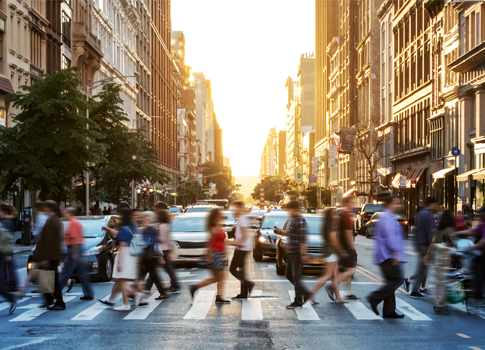Reaching major milestones in life, like an important birthday or buying a first house tends to disrupt our regular habits, and often results in us forming new ones. Entering in and out of lockdown over the past year and half has been a major catalyst for this. We are no longer forced to stay inside and take up new lockdown habits like baking banana bread or cycling on a Peloton bike at home, and as a result people have formed new behaviours and many old social norms have been altered.
According to a Duke University study 45% of our daily activities are habitual, rather than actively chosen on a day to day basis. If brands change consumer habits towards their products or services, then they can easily drive sales and growth over the long term.While the long-term impact of lockdown and Freedom Day on consumer habits may not be entirely clear yet, in the short-term, brands that seize on this time to re-engage with consumers will generate results.
One way to encourage behavioural change is by piggybacking onto an existing consumer habit. A successful example of this is from the The London Fire Brigade. In order to get people to check their fire alarms, they told people to do it at the same time that they move their clocks forward and back. By adding this onto an existing behaviour, it became more natural for consumers to turn this into a habit.
A majorly disrupted routine during the pandemic was grocery shopping. Stopping by the shop on your way home from work to pick up something for dinner was no longer an option, and, despite government warnings against it, people began panic buying things that they would have purchased more sporadically, like toilet paper.
Although many people are reverting back to old habits from before the first lockdown in March 2020, brands that capitalise on the fact that many consumers have new expectations and demands will form strong relationships with potential customers. Now is the time to make sure brands are taking consumer preferences into account with their marketing, in order to reach people in the most effective way possible.
The power of making something easy
The pandemic has caused elevated significance for things like convenience and comfort, and this has influenced the ways that consumers have engaged with brands. For instance, subscription services grew in popularity over lockdown as people were confined to their homes. Time spent on services such as Netflix and Amazon Prime Video almost doubled in 2020 and subscription food boxes became a great way for people to receive fresh ingredients to their door. But with people no longer forced to spend night after night binging Tiger King or Killing Eve, how can these types of brands retain their appeal?
It is important for brands to justify their continued role in consumer’s lives as we move into a more hybrid lifestyle. There will be new opportunities for brands to tap in to, for instance those still using their subscription services may want a more flexible plan, or one that can be frozen with less notice. Meal subscription brands could offer quicker recipes or include lunches that can be eaten on the go rather than needing to be cooked from scratch. With new consumer lifestyles coming from post-lockdown life, brands need to think about how they can support that, and in turn continue to be a relevant product in their lives.
These steps brands can take to adapt to new consumer habits won’t be without hurdles. While the UK saw the highest number of people who have been able to save, among European countries, large swaths of people had to curtail spending.
Along with financial limitations, the technology that has come along with the pandemic may also create problems for some people. Brands that have shifted more and more to digital may risk losing a share of their audience if they are not comfortable using those new features. Understanding and supporting consumers through these hurdles will allow brands to appeal to a wider audience.
The pandemic also led to more people trying different brands for a number of reasons. Things like availability, changes in finance, and new routines made people seek out alternatives to what they would normally buy. With these changes, brands need to make sure their messaging is able to target multiple audiences to encourage a switch to their products. Some people were excited to get back to their normal shopping habits, and for that brands can hype up the experience. For those still a little hesitant, measures that were put in place during lockdowns, like Tesco’s Quiet Hours, can be made permanent, like the retailer has done, to create an inclusive shopping experience for all.
There will be further opportunities for brands to capitalise on newly formed habits as we continue to figure out the “new normal”, but for what that will ultimately look like, well, we’ll just have to wait and see!
This article was written by our head of Behave and strategy, Will Hanmer-Lloyd and was originally published in Finance Derivative.






